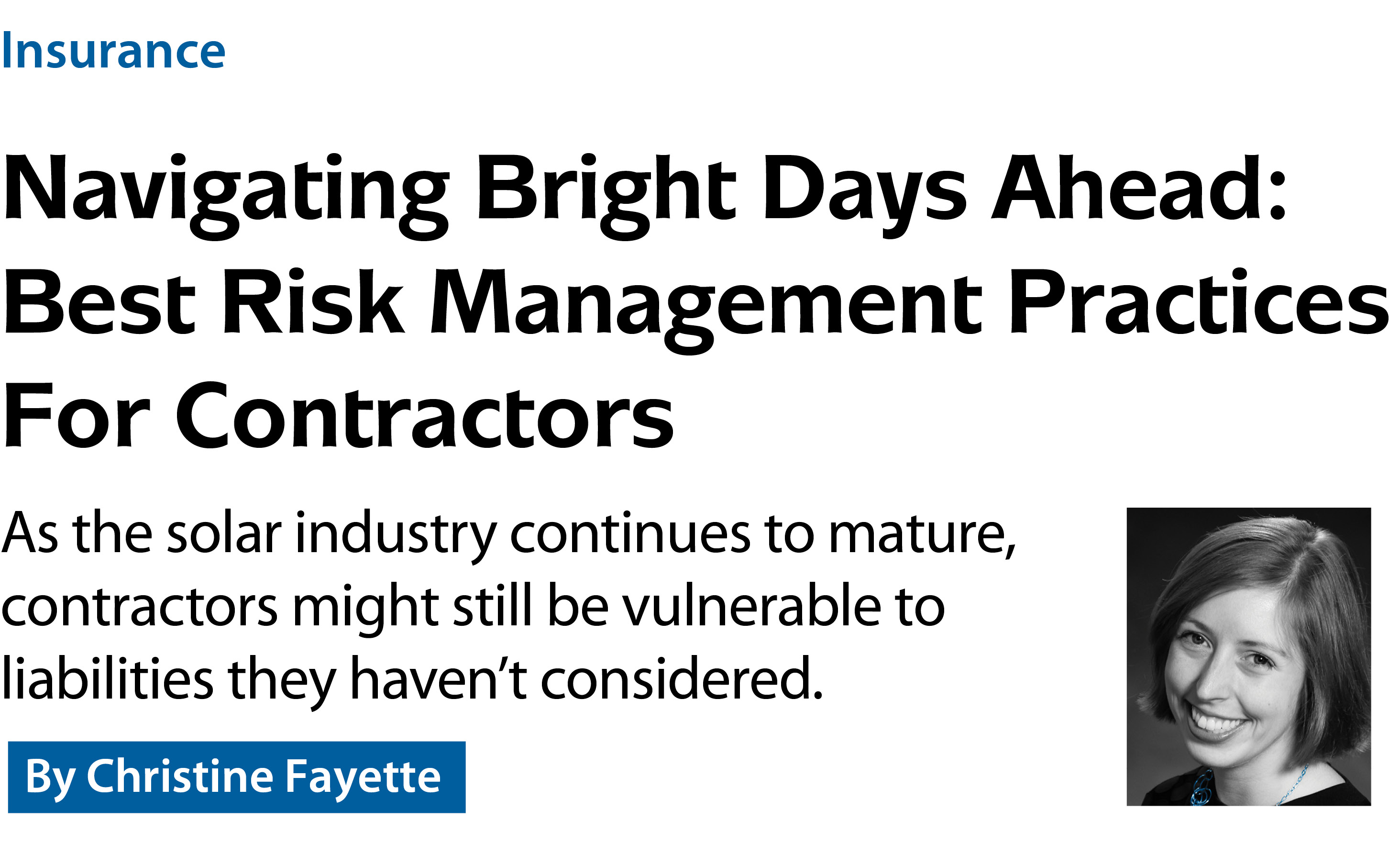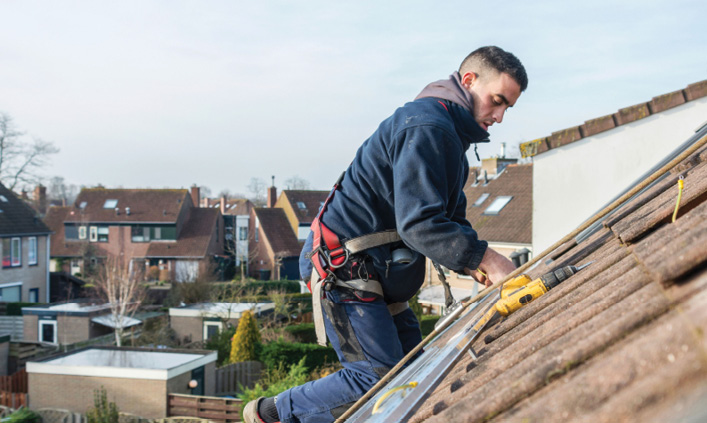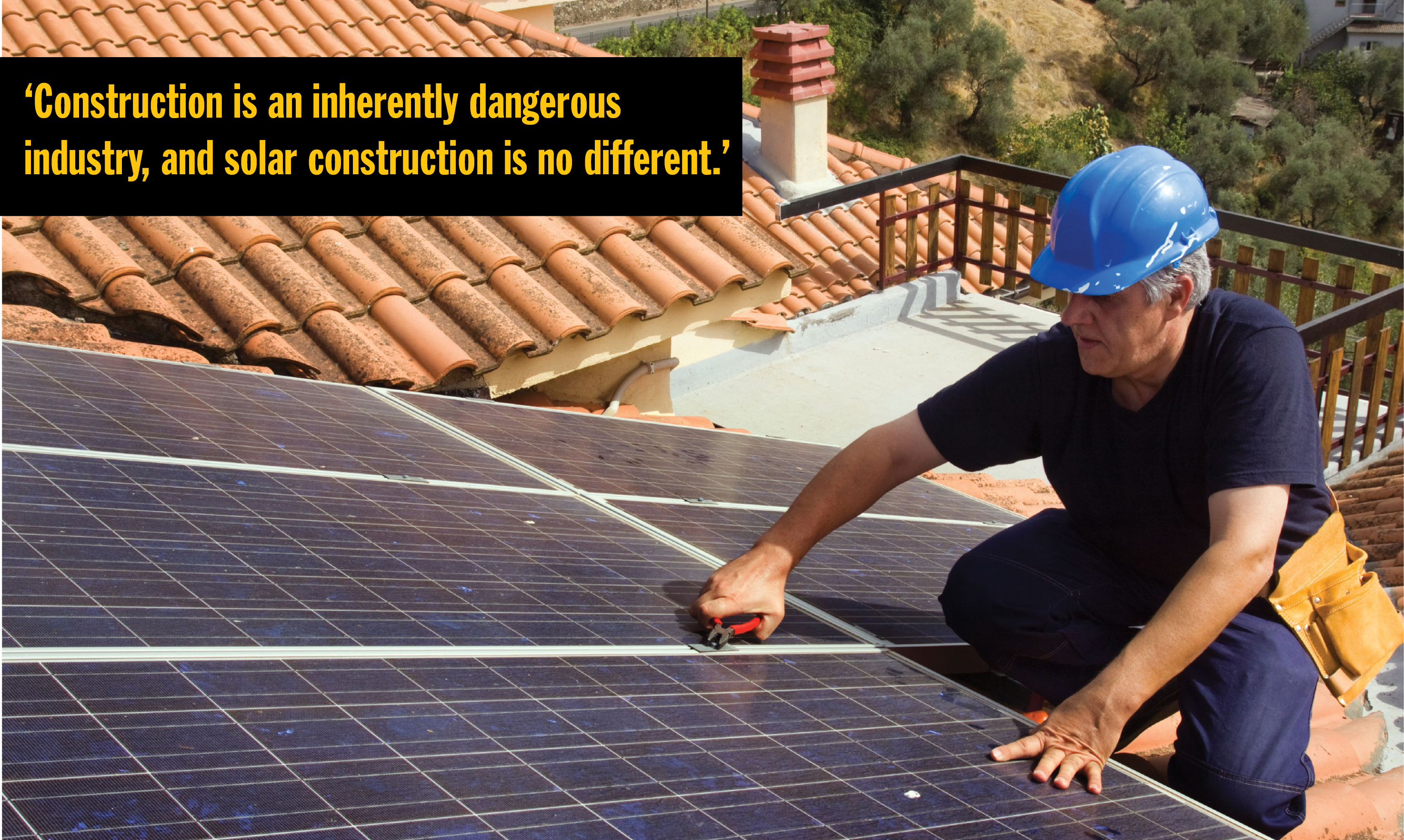

301 Moved Permanently
The number of U.S. homeowners investing in solar installations is closing in on the 1 million mark, major corporations like Walmart, IKEA and Macy’s are rushing to adopt solar technology at an increasingly rapid rate, and the U.S. has installed enough solar energy capacity to power millions of homes.
It’s a great time to be a solar contractor, as the past few years have shown great promise for the industry and President Barack Obama recently signed the five-year tiered extension of the federal investment tax credit.
There’s no sign of a slowdown in the solar industry. It’s an emerging market and still considered a new frontier with a lot of kinks to work out. Although solar panels have been available for purchase for over 30 years, growth in solar PV installations did not see a notable increase until 2010. As a result, continued uncertainty abounds regarding operational liabilities and best practices in safety and risk management. This uncertainty has forced many solar contractors to navigate uncharted waters with little to no help, often leaving businesses vulnerable to liabilities.
There are risk management organizations and certified bodies, such as the North American Board of Certified Practitioners, that are doing their part to ensure that contractors are well educated on solar industry best practices and protected from the dangers that could potentially cripple companies. Even still, it’s vital for contractors to be familiar with the operational risks that can affect their businesses and how to best mitigate those liabilities.
Ins & outs of risk
Construction is an inherently dangerous industry, and solar construction is no different. Many contractors believe that worker’s compensation and general liability insurance will cover all potential risks, but numerous other risks exist that aren’t as apparent. General liability will help to cover things such as water damage. Worker’s comp will protect contractors and their businesses from accidental injuries. But there’s much more that needs to be factored into the equation. Some of the not-so-obvious coverage plans for contractors to consider include property and inland marine, auto, and umbrella insurance:
Property and inland marine: This specifically covers solar panels and construction equipment in an integrated plan, whether lost, stolen or damaged. It includes coverage of materials away from the office, en route to or at the job site, which is ideal for contractors that don’t want to risk ceasing operations as a result of damaged products and equipment. The typical turnaround time for such a claim is different on a case-by-case basis, as each claim is unique and varies in nature of incident or extent of damage. Simple claims can be resolved in days, and more complex claims can take weeks or even months to resolve. In all cases, the sooner a claim is reported, the quicker it can be resolved.

Auto: With all of the attention focused on accidents that happen on a job site, contractors might overlook accidents that can happen on the way to a site. Many solar contractors are equipped with company vehicles to move products and employees from one place to another. Vehicle coverage and liability for damage to others in a road accident is vital, especially when the contractor is the responsible party. It’s important to consider auto insurance as part of comprehensive business coverage.
Umbrella: This is excess coverage over a general liability policy to help protect insureds from major claims and lawsuits, thus protecting their assets and the future of their companies. This is a plan that contractors want to consider, depending on the size, scale and model of their businesses. In a society that has become highly litigious, oftentimes a general liability plan won’t fully cover a business’ needs in the time of an accident. The standard limit on a general liability policy is $1 million. If a company is sued for something that is covered in the policy, but the lawsuit exceeds $1 million, any amount above that would not be covered. Umbrella liability gives contractors an extra cushion of coverage and is especially beneficial for businesses that are thriving. The larger the company, the higher the limits should be. Contractors that have large projects or a portfolio of projects are more exposed to risk. An insurance broker should be able to provide advice on liability limits. A small contractor may be adequately protected with a general liability policy or may want to consider a small umbrella on top of the general liability policy. It all comes down to the cost benefit of adding extra layers of umbrella and understanding the risk.

Forming a great team
In any given business, there are many moving parts, which is why it’s not always easy for contractors to stay informed and up to date on the latest safety and risk management practices. This makes it crucial for contractors to align themselves with the right businesses and organizations to help ensure they’re operating safely and efficiently and mitigating risk.
Most contractors don’t usually consider their insurance providers as a “typical” resource to draw from unless they work with providers with experience in the space. Some providers are willing to insure solar contractors; however, very few are specialists that can advise and educate contractors on the best safety practices and risk management considerations. In this relatively new industry, that’s essential. It’s important that a broker understand that although basic insurance plans are similar from state to state, the legal environment is not. Some states are known to be more litigious than others. For example, New York has unique nuances in the New York Labor Law, which are important for a contractor to understand if operating in the state.
A broker should also be familiar with the unique risks posed to solar contractors. There are subtle differences between the solar and construction industries. As an emerging market from an insurance perspective, the industry is still trying to understand what a solar contractor is and how one operates. Elements of roofing, millwright, electrical work and plumbing are all part of a solar contractor’s operation. This underscores the importance of being aligned with a broker that specializes in solar and one that is well versed on the industry’s distinction from construction.
Once a contractor finds a knowledgeable broker, it’s imperative that the parties establish a two-way dialogue. Given the ever-evolving tax credits associated with the solar industry, the right broker can keep a contractor informed on relevant changes. It also benefits the contractor to keep its broker in the loop on business practices and how the company runs. Well-informed brokers are better able to provide insurance plans of appropriate coverage, helping to minimize the risk of gaps in coverage.
Trickle-down safety
Mitigating risk is a team effort that doesn’t stop with the contractor. Typically employing a full team, businesses can greatly benefit from encouraging safety from the top down - from management to site leaders to workers. Establishing a strong culture of safety will typically lead to fewer accidents and liabilities and, overall, an improved bottom line, thus allowing businesses to invest in other areas and make themselves more competitive.
It’s also important to analyze site conditions on a regular basis. Foreseeing a potential accident could make or break operations, at least for the day. Weather is one element that contractors should pay close attention to, and they should understand its implications and restrictions as it relates to solar. For example, many contractors in California don’t operate between the hours of 11:00 a.m. and 1:00 p.m. due to high heat at specific times of the year. If a contractor is able to identify and plan ahead on a day when temperatures are extreme, it can significantly lower the chance of a worker succumbing to heat exhaustion and an accident occurring.
Fall protection is another way for contractors to proactively approach safety, as is addressing heavy-lifting procedures to avoid detrimental back injuries. Injury avoidance and healthy, productive employees help to maintain the bottom line and reduce the number of claims. If a solar contractor has fewer claims, it is more likely to have better insurance rates and pay less for its insurance premiums, thus improving the bottom line.
The demand for solar panel installation is hot. With the installation costs of solar energy having dramatically fallen over the past several years, it’s safe to say that solar is here to stay. That’s translating to rapid increases in solar installations. With good partners, contractors and their employees can tap into resources to stay up to date on best safety practices in the industry and mitigate their risk.
Insurance
Navigating Bright Days Ahead: Best Risk Management Practices For Contractors
By Christine Fayette
As the solar industry continues to mature, contractors might still be vulnerable to liabilities they haven’t considered.
si body si body i si body bi si body b
si depbio
- si bullets
si sh
si subhead
pullquote
si first graph
si sh no rule
si last graph